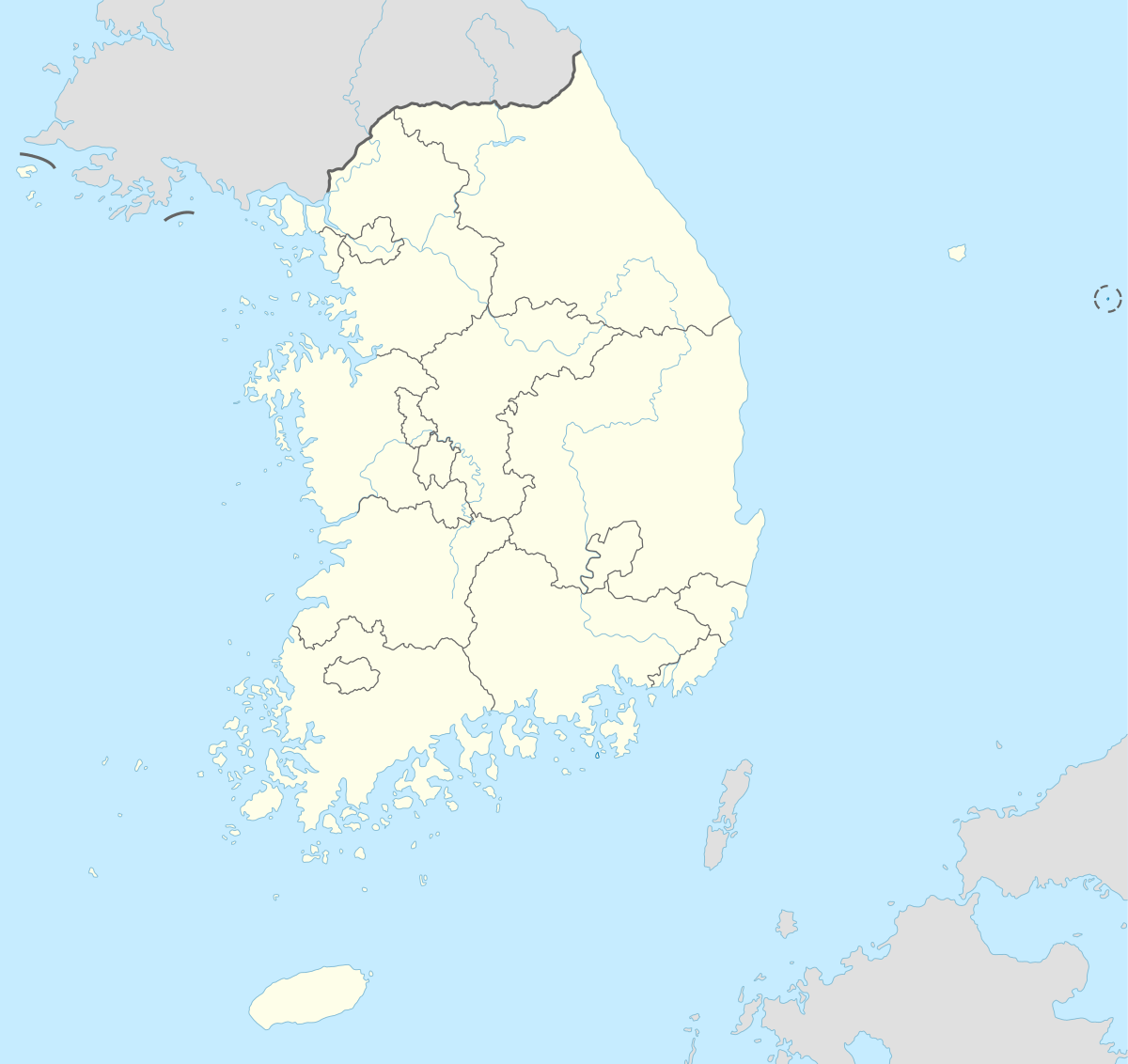Pohang Airport
| Pohang Airport 포항공항 浦項空港 Pohang Gonghang P'ohang Konghang | |||||||||||
|---|---|---|---|---|---|---|---|---|---|---|---|
 | |||||||||||
| IATA: KPO – ICAO: RKTH | |||||||||||
| Summary | |||||||||||
| Airport type | Military | ||||||||||
| Operator | Korean Airports Corporation, Republic of Korea Navy | ||||||||||
| Serves | Pohang | ||||||||||
| Location | Pohang, North Gyeongsang Province, South Korea | ||||||||||
| Elevation AMSL | 21 m / 70 ft | ||||||||||
| Coordinates | 35°59′16″N 129°25′13″E / 35.98778°N 129.42028°E | ||||||||||
| Map | |||||||||||
 KPO Location of airport in South Korea | |||||||||||
| Runways | |||||||||||
| |||||||||||
| Statistics (2011) | |||||||||||
| |||||||||||
|
Source:airport-information.com[1] | |||||||||||
Pohang Airport is an airport in Pohang, South Korea (IATA: KPO, ICAO: RKTH). In 2011, 255,227 passengers used the airport.[1]
History
Pohang Airfield was originally developed during the Japanese Imperial period.
Korean war
In early July 1950 Pohang airfield was identified as a potential base for USAF operations. On 7 July, Brigadier-General Timberlake deputy-commander of the Fifth Air Force ordered the development of the base. Company A 802nd Engineer Aviation Battalion landed at Pohang and began improving the airfield on 12 July by added a 500 feet (150 m) PSP extension and building hardstands for 27 F-51 Mustangs.[2] The airfield was designated by the USAF as K-3.
Troops of the Korean People's Army (KPA) 12th Division infiltrated the Pohang area in early August and made guerilla attacks against the airfield. By 12 August KPA troops entered Pohang and so on 13 August the 35th Fighter-Interceptor Group evacuated to Tsuiki Air Field in Japan. ROK and U.S. forces routed the KPA several days later, but the continued presence of guerilla units mitigated against an early return to the base.[3]
USAF units based there from July–August 1950 included:
- 35th Fighter-Interceptor Group from 14 July-13 August 1950[4] subordinate units included:
- 39th Fighter-Interceptor Squadron operating F-51s from 8–13 August 1950[4]
- 40th Fighter-Interceptor Squadron operating F-51s from 16 July-13 August 1950[5]
- 6131st Air Base Squadron (later 6131st Tactical Support Wing) from 14 July 1950[5]
The 802nd Battalion returned to Pohang on 27 September finding the airfield relatively undamaged. The 35th Fighter-Interceptor Group returned to Pohang on 3 October. On 12 October No. 77 Squadron RAAF operating F-51s arrived at Pohang.[6]
In July 1953 the United States Navy deployed two AJ (A-2) Savage aircraft to K-3 as a nuclear deterrent in the final days of the Korean War.[7]
Current
In October 2008 the United States Navy relocated a permanent detachment of MH-53E Sea Dragons assigned to HM-14 from Iwakuni, Japan. This detachment provides Seventh Fleet with a forward-deployed AMCM and heavy-lift asset.
Airlines and destinations
| Airlines | Destinations |
|---|---|
| Korean Air | Seoul-Gimpo[8] |
Access
Bus
- No. 200 : Yangdeok ↔ Lotte Department Store ↔ Jukdo Market ↔ POSCO ↔ Pohang Airport ↔ Guryongpo
References
- 1 2 "South Korea Traffic Statistics". airport-information.com.
- ↑ Futrell, Frank (1983). The United States Air Force in Korea, 1950-1953. Air Force History & Museums Program. p. 95. ISBN 9780912799711.
- ↑ Futrell, p.124
- 1 2 Futrell, p.112
- 1 2 Futrell, p.95
- ↑ Futrell, p.178
- ↑ Miller, Jerry. Nuclear Weapons and Aircraft Carriers: How the Bomb Saved Naval Aviation. Washington, D.C.: Smithsonian Institution Press, 2001. ISBN 1-56098-944-0.
- ↑ http://www.koreaherald.com/view.php?ud=20160427000642
![]() This article incorporates public domain material from the United States Air Force website http://www.af.mil.
This article incorporates public domain material from the United States Air Force website http://www.af.mil.
